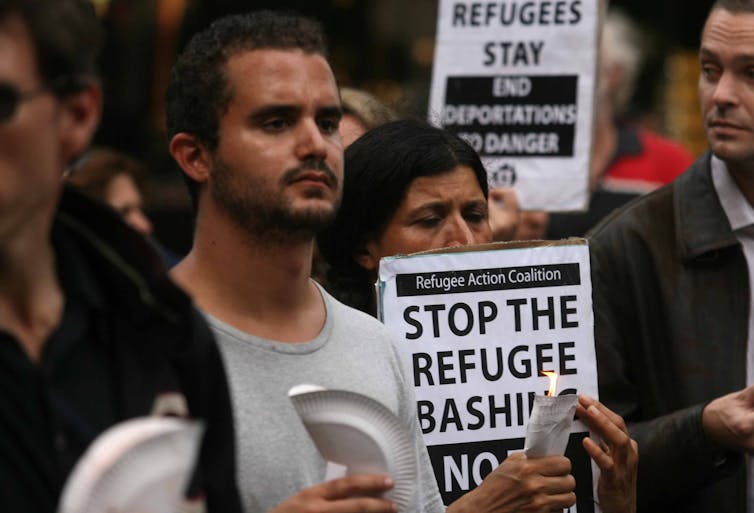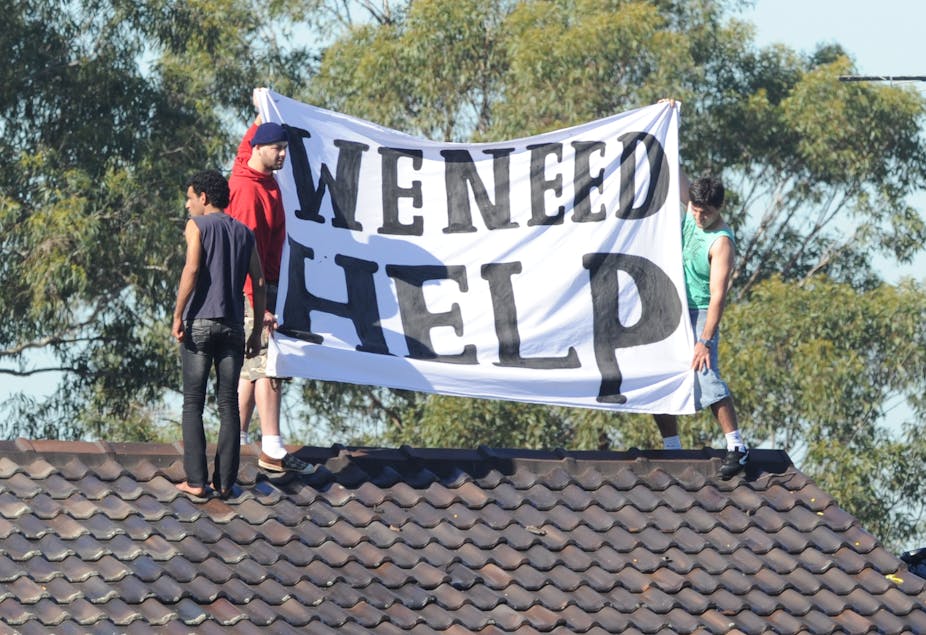For a brief moment in 2008 asylum seeker advocates were optimistic. This moment of optimism has now gone. As the government announces plans to send newly arriving asylum seekers to Malaysia and also enters negotiations with PNG, it seems the only way is down. But things could be better, if we would just face facts.
A bright new future
In 2008, in a compelling speech, then Immigration Minister Chris Evans outlined a set of Key Detention Values where decency and humanity appeared to trump politics.
The Temporary Protection Visa was abolished, the Pacific Solution laid to rest and many believed a trajectory of change would take hold that elevated the human rights of asylum seekers.
The values told us that immigration detention would be a last resort, children would not be detained and people within detention facilities would be treated fairly and reasonably in conditions that ensured the inherent dignity of the human person.
The rhetoric of government changed too. Invoking a modicum of idealism and compassion, asylum speakers were far less demonised in public discourse.
That was then; this is now
There has been a trajectory of change backwards, and of such magnitude and pace that many commentators are expressing the view that things are worse now than in the time of Prime Minister John Howard.
Federal government policy is crisis driven and hastily constructed. Increasingly unsympathetic community attitudes are fuelled by an unrelenting Opposition and propelled by voracious sections of the media.
Asylum seekers are portrayed as dangerous, fanatical and not worthy of our embrace. On all counts refugee advocates have been duped and betrayed.
Global push factors have contributed to the growth in boat arrivals, resulting in panic and poorly constructed policy and practice frameworks.
Detention centres have been expanded and filled and the capacity to process asylum seekers in a timely manner has diminished. The number of children secured in detention environments has increased.
And, rather than dealing with the reality of global forced migration, the federal government endeavours to impose coercive measures such as the failed attempt to transfer our core international responsibilities to our less resourced East Timorese neighbour.
And now as I write a deal is being struck with Papua New Guinea to send asylum seekers into exile in its mothballed Manus Island detention facility.

Surely common-sense allows us to understand that delays and chaos in claims processing, detention in remote settings and dehumanising practices will have serious consequences for both detainees and the host nation.
Political opportunism created by boat arrivals and problems within detention centres have created what Greens Senator Sarah Hanson-Young aptly calls the “race to the bottom”.
Not only are we hearing government sentiment on “the full force of the law” and the Opposition mantra of “stop the boats”, but the community is buoyed by this race and engages in cries to send back asylum seekers who are irrationally perceived as a threat to our country and not “genuine”.
Isn’t it time to talk some sense?
A few truths need to be communicated by the government, and the Opposition, which have at their disposal both information and resources to do so.
In essence, people are fleeing dire situations the world over and Australia receives just 2% of the industrialised world’s asylum seekers.
There are many countries that do not detain asylum seekers and find more humane ways of processing people with no adverse threat to their national interests.
Countries with far less economic capacity than Australia host large numbers of refugees, including Pakistan, Iran and Jordan.
And we are deluding ourselves if we think we can stop asylum seeker arrivals. The ongoing unrest in the Middle East and North Africa has intensified forced migration in the search for safe haven.
Australian attempts to “stop the boats” will not stop people from experiencing violence and persecution. For asylum seekers, the trauma of trying to find safe haven continues.
Let go of the fear
We are a border–obsessed nation and this obsession has increased since the events of September 11 2001. Regrettably the discourse around border protection and asylum seekers becomes conflated in the public mind, elevating the fear factor.
What follows is that a substantial amount of our national budget is invested in border security at the expense of human security.
Restoring humanity to people who seek our protection should be the first step. Not only by eliminating images of dark and threatening men, but by recounting more honest stories of our shared humanity and shared aspirations.

Keeping people out of sight and out of mind in remote locations dishonours a human rights-respecting nation. It sways the community into inoculating itself against the realities of people’s lives and hiding behind the mask of privilege afforded to those of us who do not live each day in fear.
A more open borders approach would go some way to eliminating what is in effect a socially constructed problem. Only a small percentage of the world’s people are on the move and even fewer are asylum seekers.
I am struck by the words of British writer Phillipe Legrain who points to the injustice between those who are free to move and those who are tied to one place, which he posits is morally wrong, stupid and politically unsustainable.
This is particularly so for those who are tied to a place where they endure persecution, discrimination and suffering.
As World Refugee Day approaches in June, let us revive the hopes of three years ago and roll out the welcome mat for refugees.

